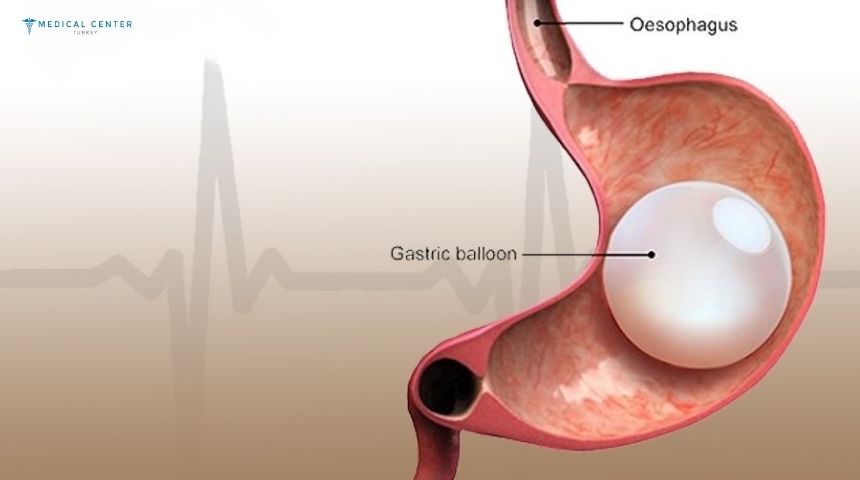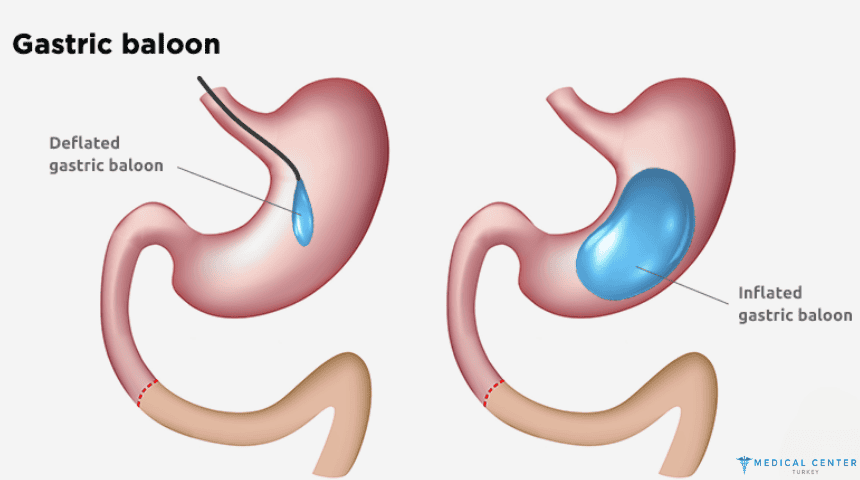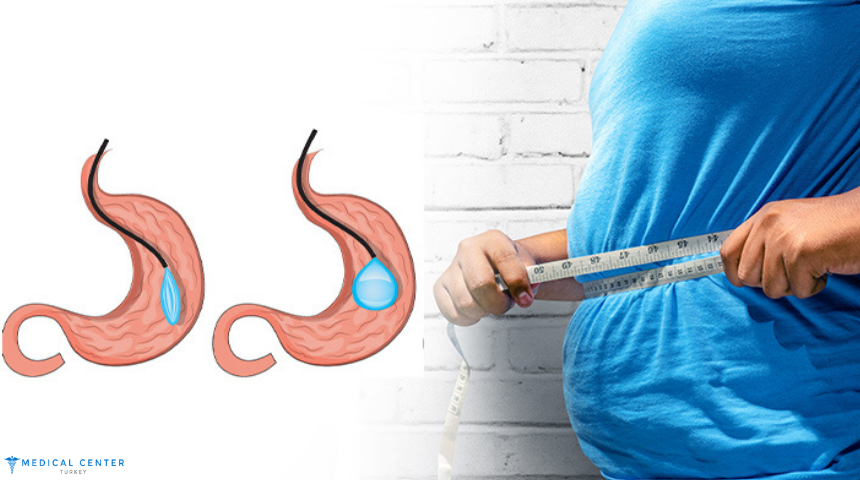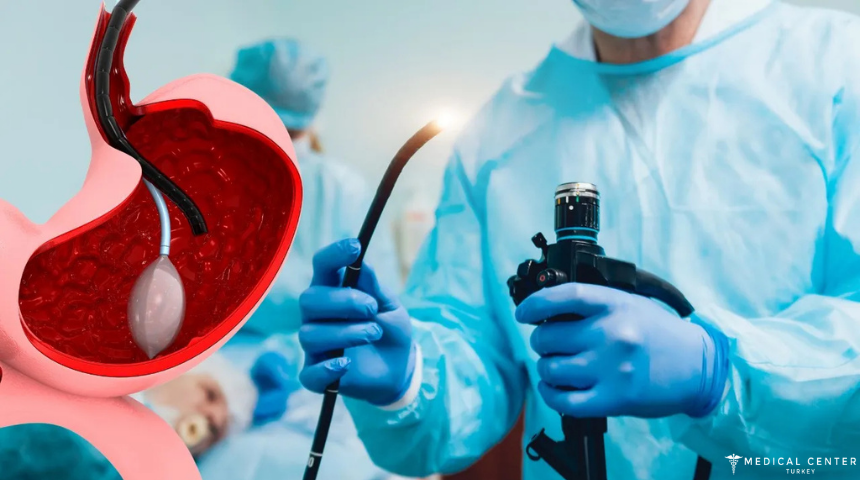Gastric Balloon Surgery in 2025
Gastric Balloon Surgery in 2025 is an article that aims to give you all the information you do not know about Gastric Balloon Surgery and more. We kindly shared the main headings with you;
What is gastric balloon surgery and how does it work?
Gastric balloon surgery is a non-surgical weight loss procedure designed to help people lose excess weight by reducing their appetite and food intake. Unlike traditional bariatric surgery, it doesn’t involve any cutting or permanent changes to the stomach. Instead, a soft, silicone balloon is inserted into the stomach through the mouth using an endoscope. Once in place, the balloon is filled with a sterile saline solution, expanding to take up space in the stomach.
The main idea is to create a feeling of fullness with less food. Because the balloon takes up space, patients eat smaller portions and feel satisfied faster. This helps to reduce calorie intake without strict dieting or intense physical activity.
The procedure typically takes about 20 to 30 minutes and is performed under mild sedation. Most patients go home the same day. The gastric balloon is temporary and is usually left in the stomach for about six months. During this period, patients also receive support from nutritionists and medical teams to help them develop healthier habits.
Gastric balloon surgery is a helpful tool for those who struggle with weight loss through diet and exercise alone. It offers a non-invasive option that encourages gradual and sustainable results without the need for major surgery.
Who is an ideal candidate for gastric balloon surgery?
An ideal candidate for gastric balloon surgery is someone who is overweight or obese and has had difficulty losing weight through diet and exercise alone. Typically, this procedure is recommended for individuals with a Body Mass Index (BMI) between 30 and 40. However, in some cases, people with a slightly lower BMI may also qualify if they have weight-related health issues like high blood pressure, diabetes, or sleep apnea.
This treatment is often suitable for patients who are not yet ready for or do not qualify for more invasive bariatric surgeries, such as gastric bypass or sleeve gastrectomy. It’s also a good option for those looking for a temporary and less risky solution to jumpstart their weight loss journey.
Candidates must also be willing to commit to lifestyle changes, including healthy eating and regular physical activity. The balloon is a tool to support weight loss, not a permanent fix. Long-term success depends on a patient’s motivation and ability to stick to a structured program.
People with certain medical conditions, such as previous stomach surgeries, large hiatal hernias, or gastrointestinal bleeding, may not be eligible. A consultation with a healthcare professional is essential to determine whether gastric balloon surgery is the right option based on individual health and goals.
How much weight can you lose with a gastric balloon in 2025?
The amount of weight a person can lose with a gastric balloon varies, but most patients can expect to lose between 10% and 15% of their total body weight within six months. This means that someone who weighs 100 kilograms may lose around 10 to 15 kilograms during the treatment period.
Several factors affect how much weight a person will lose, including diet, physical activity, metabolism, and commitment to lifestyle changes. The gastric balloon itself is not magic—it works best when combined with healthy habits and professional guidance.
In 2025, improvements in balloon design and support programs have made the results even more effective. Many clinics now offer personalized nutrition and fitness coaching, psychological support, and digital tracking tools to help patients stay on track. These advances have led to more consistent and longer-lasting weight loss outcomes.
It’s important to note that the gastric balloon is just the beginning. After the balloon is removed, maintaining the new weight requires continued effort. Those who follow a structured plan and stay connected with their medical team are more likely to achieve lasting results.
While individual results may differ, the gastric balloon offers a safe and effective way to lose a significant amount of weight in a short time, especially when used as part of a broader health strategy.
You can easily request a personalized treatment plan and receive your free quote by clicking the image below.
What are the risks or side effects of gastric balloon surgery?
Gastric balloon surgery is considered safe, especially because it is non-surgical and does not involve incisions or permanent changes to the body. However, like any medical procedure, it can come with some side effects and risks that patients should be aware of.
The most common side effects occur in the first few days after the balloon is placed. These may include nausea, vomiting, stomach cramps, and bloating. These symptoms are temporary and usually go away within a week as the body adjusts to the balloon. Medications are often prescribed to help manage these early discomforts.
Less commonly, some patients may experience acid reflux, heartburn, or difficulty digesting certain foods. In rare cases, complications like balloon deflation or migration can occur. If the balloon deflates and moves into the intestines, it may require removal. However, modern balloons are designed with safety valves and tracking features to detect such issues early.
Infections and ulcers are very rare but possible if the stomach lining becomes irritated. That’s why close follow-up care is important. Regular check-ups ensure any problems are caught and treated early.
Gastric balloon surgery is low risk, especially when performed by experienced professionals in a well-equipped clinic. Patients who follow medical advice and attend follow-ups typically experience smooth recoveries and safe outcomes.
How long does the gastric balloon stay in the stomach?
The gastric balloon is designed to stay in the stomach for a limited time. In most cases, it remains in place for about six months. During this period, the balloon helps patients feel full faster, eat less, and lose weight. The six-month timeline is carefully chosen to balance effectiveness and safety, as leaving the balloon in for too long could increase the risk of complications.
There are different types of balloons, and some models can stay in the stomach for up to 12 months. However, these longer-term balloons are usually recommended based on individual needs and under careful supervision by a medical team.
Once the treatment period is over, the balloon is removed in a similar way it was placed, through the mouth using an endoscope. The removal process is simple and usually takes about 20 to 30 minutes under mild sedation.
After the balloon is removed, maintaining the weight loss depends on lifestyle choices. The goal is to use the time with the balloon to build healthy eating habits and activity routines that continue long after the device is gone.
While the gastric balloon is temporary, it offers lasting results when combined with ongoing support and a healthy lifestyle.
If you need more detailed information and support, you can contact our team. Just click on the link below.





